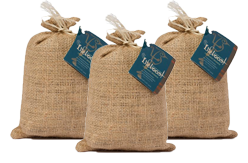


Journey With Me To The Origin Of One Of Coffee's Long-Time Nicknames
And I'll take you on a historic adventure from Europe, to Southeast Asia, and eventually to a cup of creamy, bright, subtly-earthy coffee, graced with hints of tropical flowers and spice.
In the 17th century, Dutch traders journeyed near the equator to an island known for their fragrant, flavorful, exotic, and rare spices.
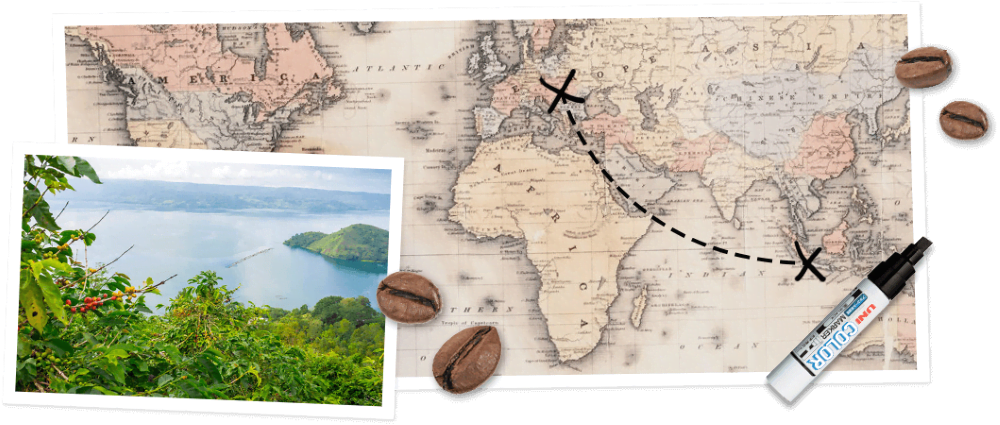
Here, the Southeast Asian islanders introduced the traders to their tropical home and unique spices, and in turn, the Dutch introduced the Indonesians to none other than the coffee plant.
The Dutch saw this tropical climate and lush, verdant area as ideal for growing coffee shrubs.
And, as the island is almost entirely volcanic in origin, its dark, enriched soil did not disappoint, producing a superior quality Arabica coffee bean.
In fact, the depth and flavor of these single origin beans far exceeded what the Dutch traders experienced in their own coffee. And soon, the highest quality coffee became the largest export from the islands to their European friends.
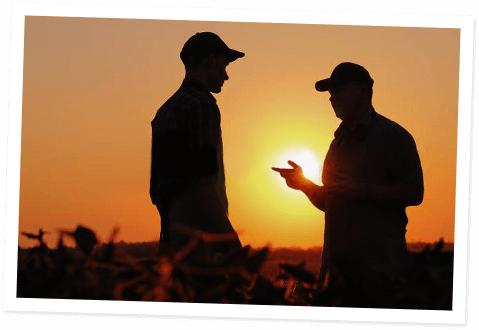
It is thought, upon experiencing the exquisitely flavored coffee, that the Dutch began to introduce this superior quality bean as "java" named after the main Indonesian island responsible for the exceptionally flavored, rich, bold beans.
I think it's safe to say the Dutch traders were pleased with their decision to introduce the plant to the islands!
Unfortunately, in the late 1880's, much of Indonesia's Arabica coffee was lost due to what is known as coffee leaf rust.
For this reason, many coffee growers in Java began growing Robusta varieties of coffee beans instead of the superior quality Arabica. However, though these plants seemed to be immune to the leaf rust, some farmers felt the flavors just didn't measure up.
So, those who wanted to continue growing the Arabica beans they knew and loved had to journey high into the nearby mountains to do so.
Growing single origin, superior quality Arabica coffee beans in Java, Indonesia now meant traveling to elevations so high, they could only be reached on foot!
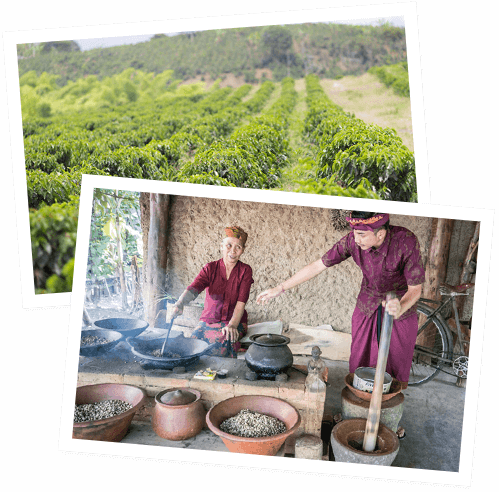
And, that's where our journey leads us to Mr. Tobing.
Mr. Tobing owns approximately 50 hectares of coffee farms in West Java, producing 80-90 tons of coffee beans annually.
His talented, precisioned methods as a farmer have resulted in a superior quality product that has grabbed the attention of buyers from afar. From Jakarta, to Singapore, and Australia, specialty roasters regularly seek to buy small microlots from him.

His methods are common to the area, but his talent and attention to detail exacting these methods is what sets him above the rest.
But, his job as a coffee farmer in West Java isn't without difficulty. Where coffee farms in East Java are found at much lower elevations, Mr. Tobing's Arabica beans are grown high in the Preanger Mountain Range, known as the "home of the gods."
The area's climate also prohibits the most common coffee processing methods. This means more work for farmers here, but they are rewarded with a rich, exquisite coffee bean they are delighted to bring to consumers.
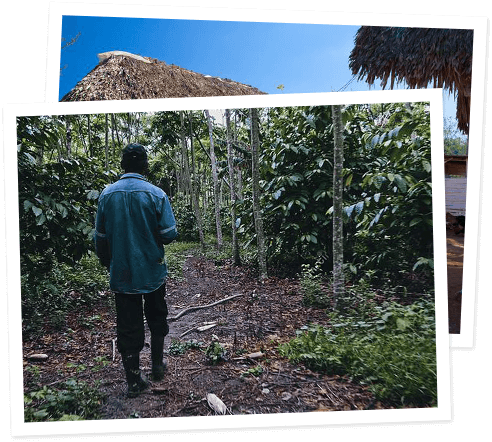
Mr. Tobing and his fellow local organic farmers begin their day in the darkness of the early morning hours. There'll be no warm, orange orb glowing over the mountain horizon greeting them before they begin their travels upward.
As they journey, the air is warm, moist, and humid in the tropical island region, but the temperatures slightly cool as they travel to higher and higher elevations through the dense foliage.
By the time the first rays of daylight appear, they've already passed robusta coffee and tea plantations at heights much lower.
As they approach 3000 ft, their 4-wheel-drive vehicles cannot withstand the extreme heights, and they are forced to continue the journey to their small coffee farms in two ways...

As they approach 3000 ft, their 4-wheel-drive vehicles cannot withstand the extreme heights, and they are forced to continue the journey to their small coffee farms in two ways...
Some will trudge forward on foot, while others ride scooters to their final destination.
The farmers are so accustomed to the rains, that they rarely notice the wet leaves from nearby plants dripping large droplets of leftover rainwater all around them.
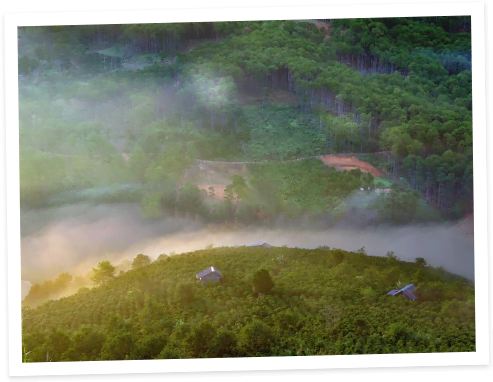
As they reach their farms, they are welcomed by the sight of bright, ruby, red coffee cherries subtly poking through an entire sea of lush, mountainous, green.
The coffee shrubs share the rich, fertile, volcanic soil with neighboring potato and cacao plants. Shaded by the surrounding vegetation, they gain protection from the rains, absorb nutrients, and create greater depths of flavor.
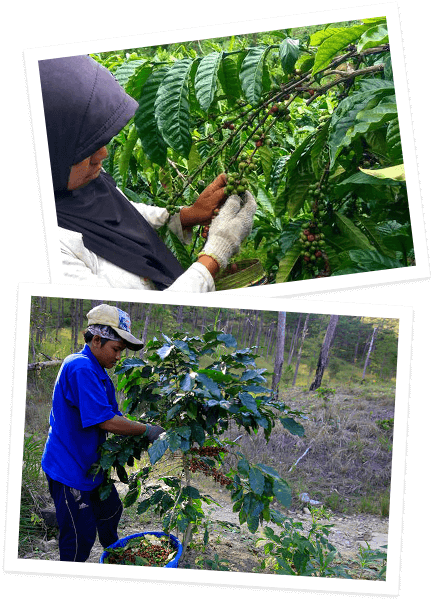
This season of harvest is done through careful inspection. Mr. Tobing has been honing his now perfected methods for 15 years.
Taking his hands and parting through the dark green, waxy leaves of the plants, he teaches not only his own farmhands, but the other farmers and pickers in the area, to look for only the ripest, most plump, ruby red cherries.
The cherries are delicately plucked, leaving the stem perfectly intact to ensure a fruitful harvest next season.
Mr. Tobing triple picks his crop, which means this is only the first of at least three sorting steps they will incorporate to ensure only the best coffee cherries are selected.
The farmers are busy, working for hours, filling basket after basket of bright red coffee cherries.

They cannot carry the full baskets back down to their vehicles. The elevation here requires that the harvested coffee cherries can only be taken to the collection point via scooter.
This season of harvest is filled with long days that turn into nights and back into days again filled with mountain trips to pick cherries followed by days of processing.
After another meticulous round of inspection, the remaining, premium, ripe cherries must be fermented overnight to help breakdown the pectin in the mucilage of the bean.
After the mucilage is removed, a paper-like substance surrounding the inner coffee bean, known as the parchment, is revealed.
Mr. Tobing further inspects both his beans, and those he buys from nearby organic farmers before processing can continue.
As the outer parchment is still wet, the beans are transferred outdoors where the warm rays of the tropical sun will dry them.
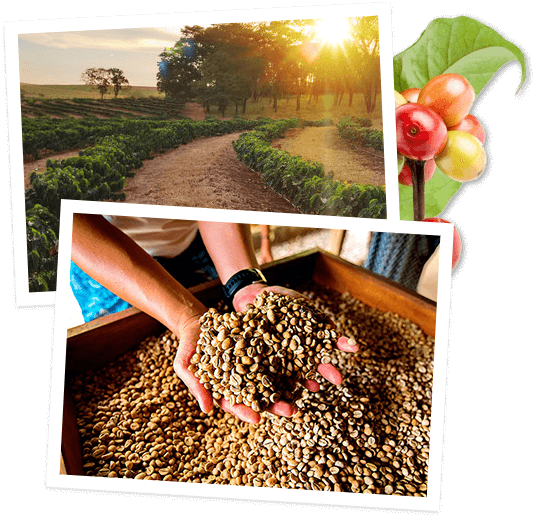
Patience is tested as the wait for the perfect humidity percentage draws out from one day, then two, and even a third day if needed, until the coffee beans reach the perfect dryness for hulling.
Normally, other coffee varieties continue drying until reaching a moisture content of roughly 11%, making it easy to remove the dried parchment, but not with Java Blue.
Mr. Tobing now instructs his farmhands to bring the soft, water-inflated beans to be hulled.
The beans are more delicate at this point, not being as dry and brittle as other varieties. Thankfully, the machine is designed to carefully remove the semi-wet parchment from around the beans carefully.
Now it's time for a different kind of inspection. Due to the delicate nature of the beans as they enter the hulling machine, upon their exit, they must again be examined for any damage.
Year after year of carefully sorting through the beans has made Mr. Tobing an expert at spotting any defects. He finds a few beans contain small splits near their ends, and they are promptly discarded.
But, incorporating the wet-hulling method, the beans have not yet finished their journey.
Due to the warm, humid, island climate, to ensure a pure product, free of bacteria from moisture, the beans must again be dried now that their parchment has been removed. Yes, a few more days spent in the equatorial sun.
In the daylight hours, the beans dry outdoors. During the moist, dark nighttime hours, the beans continue fermenting as they are brought indoors and stored in large bags.
Two days have passed. Mr. Tobing and his farmers yet again inspect the coffee beans.
"When they're blue, they're ready," Mr. Tobing instructs.

This unique processing method, as it dries the beans more slowly and through periods spent indoors and out, results in a distinctly colored bean. The dark greenish-blue, and sometimes patchy colors are often described as the blue color Mr. Tobing is referring to here.
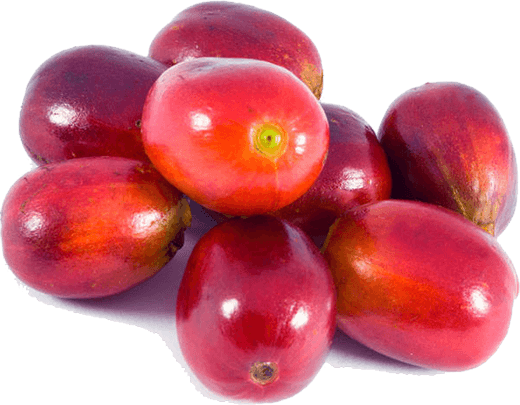
From mountainous treks to meticulous processing.
From ripe, bright red coffee cherries, to dried slightly blue colored perfection.
One sip of Java Blue and you'll know why natives refer to its growing region as the "home of the gods."
The subtle earthy finish comes compliments of the fertile, volcanic, mountain soil.
The coffee is smooth. It's mouthfeel, creamy, like velvet.
These specialty Arabica beans, grown in the West Java tropics are known for their strong body. A flavor that echoes through time with their rich history.

These specialty Arabica beans, grown in the West Java tropics are known for their strong body. A flavor that echoes through time with their rich history.
Java Blue's low acidity allows you to fully experience its bright flavors of flowers and spice.
From the birthplace of what the Dutch knew as single origin exceptionality, years of perfected practices of both selection and processing bring all of those distinct flavors to your cup, journeying from the Netherlands, to the mountains of the tropical Southeast Asian island of Indonesia.
Strong bodied, smooth, creamy, bright, notes of flowers and spice, with a subtly earthy finish...Java Blue.
Trust me when I say that your opportunity to indulge is limited and fleeting. Coffee companies FIGHT to get this exquisite, elusive bean.
It only comes once a year, and unfortunately once we're out of this treasure...WE ARE OUT.
Now is your chance!
All Set? Then Click The Button Below to Have Your Private
Supply of Luxe Beans Shipped Right to Your Door:
I love hearing people's reactions when they finally discover what the world has been keeping from them for decades.
So please do me a favor, okay?
After you've savored your first cup of this extraordinary coffee, shoot me a quick note at support@lifeboostcoffee.com and let me know how you liked it!
You'll look forward to sharing this luxury with close friends and family like a fine wine only brought out on special occasions.

To Your Health (and Amazing Coffee),
Dr. Charles Livingston
Right now, you have the opportunity to get your hands on up to 6 10oz bags of these Microlot Specialty Java Blue coffee beans. I'm limiting availability to 6 bags per customer because I want to give as many coffee lovers as possible the chance to savor this extremely RARE opportunity.
Once we receive your order, we'll delicately roast your coffee beans and rush them right to your door. That way, you get the freshest flavor and aroma possible!
Yes! I Can't Wait To Experience These Rare Java Blue Coffee Beans
Lock in the huge 50% off discount and add 3 more bags of Single Origin, Organic Dark Roast coffee to your order now!